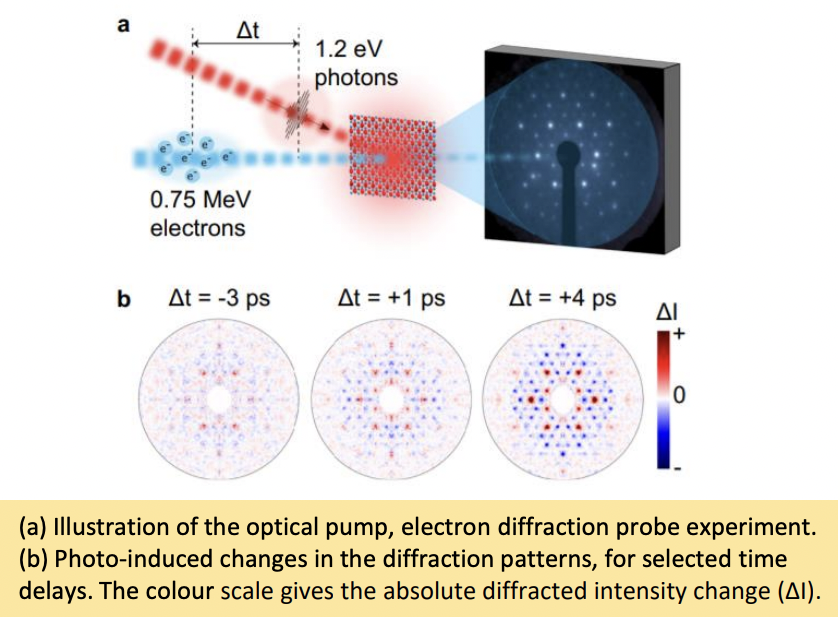Ultrafast optical melting of trimer superstructure in layered 1T′-TaTe2

featured research

Quasi-two-dimensional transition-metal dichalcogenides are a key platform for exploring emergent nanoscale phenomena arising from complex interactions. Access to the underlying degrees-of-freedom on their natural time
scales motivates the use of advanced ultrafast probes sensitive to self-organized atomic-scale patterns. The Kaindl group at Lawrence Berkeley National Lab recently reported the ultrafast investigation of 1T’-TaTe2 , demonstrating a rapid picosecond melting of its trimer cluster lattice superstructure in the low temperature (LT) phase. They observed photo-induced melting of the LT order on 1.4 ps timescale, indicative of fast switching, followed by recovery into a hot (3 × 3) trimer phase. Insight into the nature of trimer cluster melting is obtained via density functional calculations, which indicate an initial quench driven by charge-transfer transitions from bonding to non-bonding states of the Ta trimer—suggesting pathways for a photo-induced transition that is unique among the family of TaX2 materials. This work establishes TaTe2 as a promising material for optical control, motivating examination of concomitant electronic dynamics for device applications. Published in Communications Physics 4, 152 (2021).
scales motivates the use of advanced ultrafast probes sensitive to self-organized atomic-scale patterns. The Kaindl group at Lawrence Berkeley National Lab recently reported the ultrafast investigation of 1T’-TaTe2 , demonstrating a rapid picosecond melting of its trimer cluster lattice superstructure in the low temperature (LT) phase. They observed photo-induced melting of the LT order on 1.4 ps timescale, indicative of fast switching, followed by recovery into a hot (3 × 3) trimer phase. Insight into the nature of trimer cluster melting is obtained via density functional calculations, which indicate an initial quench driven by charge-transfer transitions from bonding to non-bonding states of the Ta trimer—suggesting pathways for a photo-induced transition that is unique among the family of TaX2 materials. This work establishes TaTe2 as a promising material for optical control, motivating examination of concomitant electronic dynamics for device applications. Published in Communications Physics 4, 152 (2021).